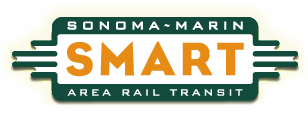SANTA ROSA, Calif. — A single donor has contributed more than $500,000 to an effort to block a sales-tax extension to fund Sonoma-Marin Area Rail Transit service, and has indicated willingness to double that amount, the Santa Rosa Press-Democrat reports.
Molly Gallaher Flater, daughter of Sonoma County developer Bill Gallaher, is funding the effort to defeat the ballot initiative to fund the rail service, which would raise more than $2.4 billion over 30 years.
“If I end up spending $1 million to save our community taxpayers from a $2.4 billion mistake then I feel it is worth every penny,” Flater said in a written statement to the newspaper.
Ads opposing the ballot initiative, Measure I, began running this week, three weeks before ballots go to voters, and just as supporters began their ad campaign.
SMART officials and supporters say defeat of the measure could mean the end of the less than 3-year-old system, which has cost $653 million to build.
“I just think it’s a devastating blow to this community if somehow we pulled the plug on the SMART system at this critical time. It’s just unfathomable,” U.S. Rep. Jared Huffman, D-San Rafael, told the paper. “The idea of walking away from all of that is so profoundly wrongheaded, I almost don’t even know where to begin. We’ll just have to work a little bit harder to overcome, but I think we’ll do it.”















JFTurcotte – Here’s my point: rail is an alternative to highway congestion for those who use rail. However, rail does not relive highway congestion. The diversion off the highway to rail is too small, typically, for highway users to notice. In my own area, lots of people ride the Hiawatha to Chicago (me included) and for those people it’s a great way to go. Meanwhile IH 94 is as crowded as ever and in fact had been expanded from three lanes to four lanes in each direction.
The count on IH 94 south from Milwaukee not only exceeds the Hiawatha, it exceeds Amtrak taken as a whole, from Miami to Seattle, from San Diego to Maine. If the Hiawatha shut down that would be an awful thing for its users but would hardly make a difference to the highway.
Recall that years back there was a referendum, essentially, highway vs. rail. Which prevailed? One recalls 3 decades back looking at the obvious.
It’s California! ‘Nuff said.
What’s the point in widening 101 if the Richmond or Golden Gates bridges remain capacity-constraints? You’re certainly not going to widen those. Getting more cars into an ever-more crowded gauntlet isn’t a workable solution.
I think the Gallaher’s have it wrong. As developers they should be licking their chops at the prospect of building TOD near these stations along the line.
This has happened in other towns where large suburban type housing developers oppose transit forms because it represents a shift in housing demand from large suburban type housing tracts to more dense urban lifestyle arrangements.
Since they never have done TOD, don’t understand the economics of it, and choose not to educate themselves on how to do it profitably, they resist it.
Don’t you think its weird that the Gallahers easily let a fuel tax increase go through to get yet more roads built, but can’t fathom a revenue source for shared transportation?
The Gallahers live (and profit) off the notion that families will spend anything to get a suburban home and drive 30 miles for 25 years to reach employment. Transit does not support that cloud they live off of.
On the flip side, I think a healthy resistance to any referendum is a good thing, if anything to keep the people making the promises to their word. But dropping a half mil in a single plop forces more people to suspect something, than to actually make them think through any rational objections.
Wrong question I think Charles. Right now there’s no effective transportation system between Santa Rosa and southern Marin/SF at peak periods (which are long on weekdays and occur on weekends when people want to go to Sonoma or Napa). That includes intermediate trips. So to build one with enough capacity the right question is how much would it cost per passenger mile. I’m not sure more highway lanes wins. Even given that the ROW is probably there.
Just stupid and short sighted highway 101 is packed and the cost to widen it would be in the billions of dollars and take decades. While the Smart rail line is not covering enough of its costs in farebox revenue it can and most likely improve. The line already helps with traffic and it will help with traffic problems even more when the connection to the San Francisco bay ferries is improved.
PAL – How many trains each carrying how many riders would it take to make a visible lessening on traffic on the highway?
How much would it cost to debottleneck 101 between Novato and Santa Rosa? It’s a traffic nightmare.
Well down in the original Press Democrat article is the fact that the current dedicated sales tax does not run out until 2029, so a “no” vote now won’t immediately send the SMART fleet to the auction block. But it does complicate efforts to refinance existing debt and extend their planning horizon. And of course they’ll have to come back to voters again in the near(er) future to keep the tax revenues going, with the stakes steadily rising as we get closer to 2029.